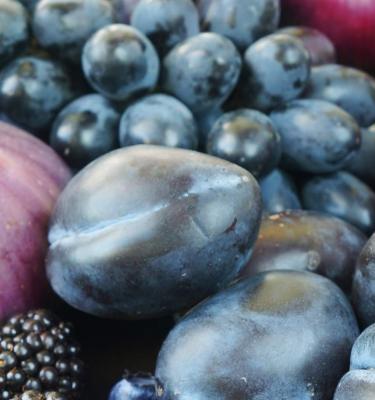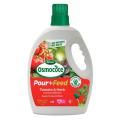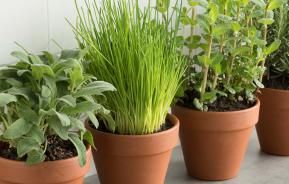
6 Health Benefits Of Eating Purple Vegetables And Fruits
6 Health Benefits Of Purple Vegetables
Besides looking pretty in the garden, purple vegetables are great for our health too. They’re a fantastic source of nutrients, plus they help to prevent illness and promote healing. And they’re beneficial for our well-being too. In this article we'll look at the many reasons why you should add more purple to your diet.
There are many benefits of purple vegetables and fruits, including:
#1
Fight free radicals
Free radicals are associated with the development of diseases, and cause oxidative stress. Purple fruits and vegetables contain antioxidants and anthocyanins, which contribute to reducing the effects of free radicals. The purple colour which occurs naturally in some foods is a result of the presence of anthocyanins. The more purple the vegetable, the more anthocyanin it contains, and so the better it is at dealing with the unwanted free radicals.
#2
Reduce inflammation
Numerous studies have shown that purple foods have an anti-inflammatory effect, due to the high levels of anthocyanin in them. This means that purple vegetables could be good for helping with chronic conditions such as inflammatory arthritis, as well as preventing the development of other immune dysfunctions and life limiting illnesses.
#3
Prevention
Purple vegetables are claimed to help protect against Alzheimer's disease, cancer and type 2 diabetes. Some studies have suggested that the anthocyanins present in naturally purple foods help our bodies to regulate blood sugar levels, reducing the risk of developing type 2 diabetes. Lots of studies propose that anthocyanins can also improve attention and memory, helping to keep the brain functioning better for longer.
#4
Healthy hearts
Anthocyanins from purple fruit and vegetables are believed to help stop blood pressure from rising, as well as to decrease cholesterol levels. This reduces pressure in the arteries, which in turn helps to keep the heart in good condition. Purple fruit and veggies are rich in nutrients and naturally low in fat, so a diet packed with these is a good way to maintain a healthy weight and reduce your risk of heart disease too.
#5
Mitigate Alcohol-Related Liver Stress
The antioxidants present in purple food have been shown to possess properties that could potentially support liver function and mitigate oxidative stress from alcohol. Incorporating a bowl of purple and red berries after consuming alcohol might be a healthier choice for supporting liver health and overall well-being.
#6
Glowing skin
Purple fruit and vegetables help to promote blood circulation and cellular health, which is great for our skin. Anthocyanins have a healing effect on our cells, and can indirectly help repair damaged skin. They also have anti-bacterial qualities, helping our bodies to heal wounds. All in all they can keep our skin looking youthful and glowing!
Our favourite purple vegetables and fruit:
- Blackberries. Like many purple coloured foods, blackberries are full of beneficial phytochemicals, vitamin C, K and manganese.
- Blackcurrants. A fantastic source of vitamin C, and pretty good at providing some of your daily iron needs too.
- Beans. Purple, green and yellow varieties are available and can be grown in the spring and summer across the country. A great source of protein, and purple beans are much easier to spot amongst the green foliage!
- Beetroot. A good source of fibre, and proven to reduce systolic blood pressure. This root vegetable is quite rightly a staple of many vegetable patches.
- Blueberries. Widely regarded as a super food, blueberries are full of vitamin C and antioxidants. They’re deliciously sweet too!
- Cabbage. A round head of red cabbage contains high levels of beneficial glucosinolates as well as anthocyanins.
- Carrots. Orange carrots are easy to find, but purple ones taste just the same and have the added benefit of containing those all important anthocyanins.
- Cauliflower. Try eating purple cauliflower instead of white - it even stays purple when cooked!
- Eggplant. A low carbohydrate way to receive high levels of fibre, folate and manganese.
- Grapes. A delicious fruit which is easy to snack on. Choose seedless purple grapes over their green relatives, for extra goodness.
- Kale. Containing incredible levels of vitamins C and K, choose a red variety and find a recipe which calls for it to be used raw, which will retain much of the goodness.
- Kohlrabi. This lesser known brassica can be purple or green and is believed to be particularly good at reducing inflammation.
- Lettuce and leaves. There are lots of leafy purple varieties available, including some spicier ones, such as bok choy, often used in Asian and Chinese dishes.
- Onions. Red onions are an easy way to add purple vegetables to your diet and taste slightly sweeter than their brown counterparts.
- Potatoes. Yes, really, potatoes can be purple as well as white! They have the same flavour, but with all the added benefits that purple vegetables have.
- Purple-sprouting broccoli. All broccoli contains rich levels of vitamins B, C, K, but purple varieties also contain anthocyanins. Steam or stir-fry them to retain as much goodness as possible.
- Raspberries. There is so much goodness in raspberries that it’s hard to know where to start - there are all sorts of phytochemicals in them, as well as very high levels of vitamin C and manganese.
- Sweet potatoes. A great purple root vegetable! Grow purple-fleshed varieties to benefit from the increased amounts of anthocyanin. They’re also rich in vitamins A, C, B6 and manganese.








